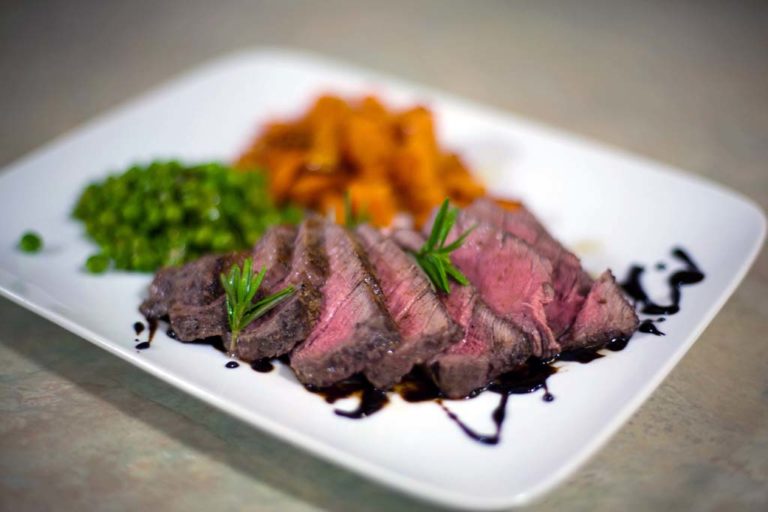
Chef's notes:
The filet mignon that we are talking about today is that from beef. But as you may or may not know, in France, the term “filet mignon” refers to pork tenderloin steaks/chops. But that doesn’t really matter as all filet mignons are delicious and worthy of being prepared and eaten. The recipe for this article is quite simple, the intent of its simplicity is to teach you how to properly pan fry filet mignon so that you may enjoy its intrinsic qualities. Which are, of course, its delicate flavor, texture, and nature: three things that make filet mignon one of the most desirable cuts of meat.
Ingredients
- 3 filet mignon
- Sea salt
- Black pepper
- 2 Tbsp butter
Pan-Fried Filet Mignon Seasoned with Sea Salt and Pepper, and Served with a Balsamic Reduction
- Pick up some nice filet mignon. Traditionally filet mignon is cut from the smaller end of the tenderloin. But a proper butcher may in fact be able to get delicious filet mignon from the larger end as well. I recommend going with filet mignon no larger that those pictured here to the right, about 6‒8 ounces.
- Season the filet mignon. When you season any steak or chop for cooking, I recommend seasoning it with no more than salt and pepper. This is especially true with the more tender steaks like filet mignon or ribeyes. Some may even refrain from seasoning it with pepper because pepper’s bold flavor may blot out the flavor of the meat.
- Heat up a frying pan over medium-high heat. For pan frying tasty meat, you will want to use butter as the frying medium. It’s my belief that it brings the most to the flavor party. And after you’re done pan frying the meat, you can toss in some shallots or mushrooms and serve them with the meat. Once the butter is melted and the pan is hot, lay the filet mignon into the pan.
- Pan fry both sides of the filet mignon. The first side will take approximately 3‒4 minutes to brown. That is not an exact measurement, so you may want to check it after a couple minutes. Flip it over and fry the other side. After another 3 minutes, check the internal temperature. Use temperatures listed at the bottom of the page as a guide.
- Finish and rest the filet mignons. Once the filet mignon has reached the right internal temperature according to your preference, though hopefully not past medium, rest them for a few minutes before eating them. The elevated wire rack works really well for this. Expect a little dripage, but not too much. Serve them with the butter from the pan or a balsamic reduction, the recipe is to the right.
Tips & Tricks
- Cooking temps for the filet should be 120–125 degrees F for rare, 130–140 for medium-rare, 140–150 for medium, 150–160 for medium-well, and 160+ for well-done. Seriously, though, don’t cook them past medium.
- Let the filet mignon come near to room temperature before you cook them. It will help them cook more evenly.
- Don’t over-season your filet mignon, keep it simple.
- Always rest the filet mignon before eating.
- I recommended using the larger filet mignons for broiling because they would be harder to overcook. But with pan frying, the problem is often the reverse: the filet mignons may take forever to cook if you use the big ones. So as a result I recommend using the smaller, a.k.a. true filet mignons, for pan frying.
- If you did decide to use the larger filet mignons, there is a way to accommodate for their extended cooking time: finish them in the oven. Preheat the oven to the hottest it will go before you start. After frying both sides of the filet mignon, check the internal temperature. If it’s below where you want it, put it in the oven for 3‒4 minutes and check it again. Repeat until your target temperature has been achieved.
Balsamic Reduction Recipe
- 1 cup balsamic vinegar
- 1 tsp sugar
- Pinch of salt
Reduce over medium-low heat until syrupy and thick enough to coat the back of a spoon. Use to decorate the plates and serve with the steak.
